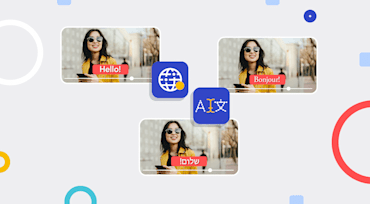It’s no secret that visual storytelling matters. And for brands, it’s a requirement. In fact, brands themselves really are the manifestation of the stories they tell. They don’t sell products; they sell stories.
In order to tell their stories and build relationships with their customers, brands have found that visual media creates an overwhelmingly powerful emotional connection with their audiences. And visual media is the vector that best conveys them.
To help bring the most important trends and benefits of visual storytelling into clear view, we analyzed more than 200 billion monthly transactions across 700 customers for our second annual State of Visual Media report, now available as a free resource on our website.
By breaking down the most critical elements of visual media, we hope to help brands determine how to best proceed with a visual storytelling framework that resonates with their audiences.
Visual Storytelling Gains Momentum Everywhere
Over the past year, there has been a continued explosion in the number of devices, browsers, and consumer channels across the world. This growth provides brands an unprecedented opportunity to get in front of their customers in a more personalized and engaging way than their competitors – to build relationships, nurture them and convert attention into profit.
Yes, it can be a challenge for brands to ensure their stories are consistently engaging across so many different device, browser and channel requirements. But the savviest relationship-driven brands stand out from the crowd by ensuring their visual storytelling is always fresh, relevant and tailor made for the way each user consumes their content.
The most compelling visual content comes from brands that have the advantages of AI and automation that can ensure their stories are optimized for every channel without requiring developers to constantly tweak primary assets for each application. The gap in speed and variety between these brands who “get it” and those who don’t will only continue to grow as engagement and sales channels continue to evolve and expand.
Small But Mighty: The Power of Microbrowsers
The immense popularity and multi-dimensional use of platforms like Slack, WhatsApp and WeChat is also leading to a surge in indirect web traffic. We have found this traffic presents a huge opportunity for brands to use visual media to leverage peer referrals within microbrowsers, the private communications via mobile devices.
Brands who focus on ensuring that all web previews shared in peer referral links look highly appealing and contain the most relevant info will see greater conversion in these channels. Specifically, there is a major need to make sure websites send a visual thumbnail with the subject in focus when the browser unfurls the link. The person who shared the link has already qualified the lead for you – these existing product or service users are your greatest brand champions. Don’t let their efforts go to waste by providing a misleading or unengaging preview.
“Dark Social” Emerges From the Shadows
One other major revelation on dark social traffic is that brands have a lot of trouble effectively measuring and attributing it. Their analytics often misidentify the source of this traffic, especially on Facebook. In examining one popular apparel brand’s social campaign, we found that nearly 64% of the links shared within microbrowsers had their campaign IDs intact, and while this is great in many respects, it’s not an accurate view of campaign engagement because it includes the amplification that’s happening through peer referrals in private conversations. And because these peer referrals have higher click-through rates, brands should ensure that these link shares offer a compelling visual experience.
Micro-Video Takes Off
Branded micro-video content is experiencing a golden age of effectiveness. We found a big spike in micro-video conversions, but a counterintuitive lack of participation in this media format by brands. A big factor in this disconnect is that micro-video can be hard to do perfectly across so many engagement and sales channels – at the same time, it needs to be flawless.
But, when executed effectively, micro-video has a particularly excellent ability to grab a user’s attention, capture their imagination, and drive them to take desired action – and win you sales.
Visual Storytelling Trends to Know
That’s just the tip of the iceberg of what we discovered and reported on in the 2020 State of Visual Media report. To learn more about the most important trends in brand storytelling, you can view the interactive report and download the full PDF at: cloudinary.com/state-of-visual-media-report.
Beyond the power of ‘dark social’, microbrowsers and micro-video content, some of the other things you’ll be able to explore, include:
- The unique characteristics of global media consumption and how to reach consumers around the globe
- The next-gen standards and formats that will define a new era of brand storytelling, including JPEG XL (hyperlink to blog post)
- Best practices for performing visual storytelling analytics and measuring success
Let’s Do It Live
Participate in our virtual session on these report findings and “The Power of Microbrowsers” as part of the ImageCon Digital Experience. This free digital version of our annual user conference will take place July 27-29 and host more than 15 thought leadership and case study sessions, including a customer panel discussion with Bleacher Report and Finalsite titled, “Game Changer: The Role Video Is Playing in the Next Generation of Visual Experiences.” Learn more and register here.





